The 15 books you should read this summer
From new Michael Ondaatje fiction to Michael Pollan’s psychedelic adventures, the summer offers a bibliophile’s feast
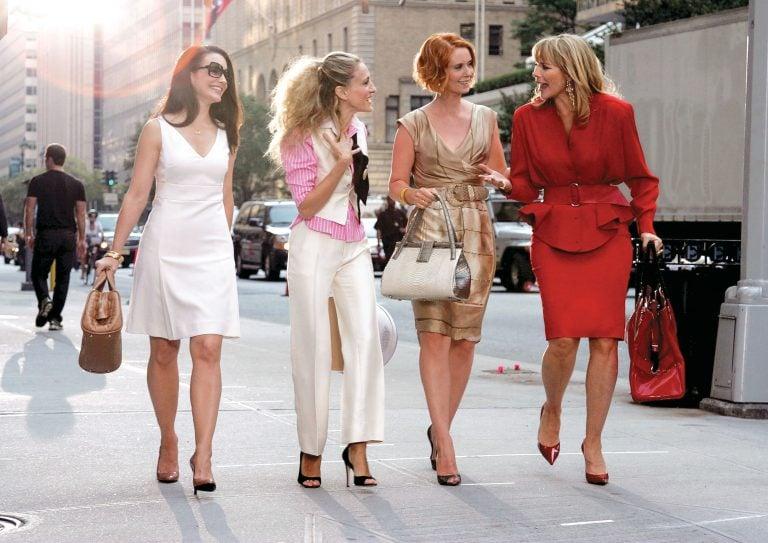
Actresses Kristin Davis, Sarah Jessica Parker, Cynthia Nixon and Kim Cattrall on the set of “Sex In The City: The Movie” in New York City on September 21, 2007. (James Devaney/WireImage/Getty Images)
Share
For many, summer vacation is a chance to spend time with cherished family. Others like to pursue adventure—on a bike, on foot, on mountains or swift-moving rivers, in far-flung places. Most of us just hope to relax, and often that means having a great book to plunge into at the end of the day, or all day long. Here are 15 new and recent books we think will enhance your holidays. They aren’t necessarily bestseller list champions, but we believe they warrant your precious time.
NON-FICTION
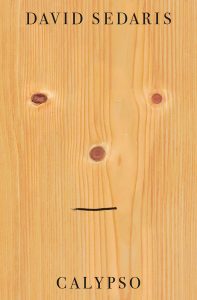 CALYPSO
CALYPSO
By David Sedaris
Sedaris does funny effortlessly. He seems to exhale comic gold. His truly resounding essays (like “Naked,” now 24 years old) are flecked with humour but meditate on serious topics. Calypso features both. He ponders family and his sister’s suicide in “Now We Are Five,” and, in “I’m Still Standing,” the gross indignity of a gastrointestinal virus during a tour. Aging, death, fractious relationships, being five foot five in a world valuing tall men: Sedaris addresses all with a concise elegance that’s suffused with wit. The title piece is especially terrific: finding a benign fatty tumour on Sedaris’s right side, his doctor offers to excise it. Sedaris declines and winds up receiving treatment late at night from a woman he met at a book signing. Why? Because he wants to feed the tumour to a snapping turtle and his doctor refused to hand the mass over. Of course.
—Brett Josef Grubisic
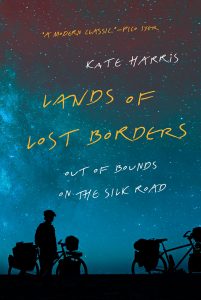 LANDS OF LOST BORDERS
LANDS OF LOST BORDERS
By Kate Harris
Journeys are as much interior as exterior, as B.C.-based Harris’s book makes plain. And that’s saying a lot, considering her absorbing, at times mesmerizing travel memoir is about a 10,000-km bike trip along the Silk Road, the ancient trading route that linked China and the Mediterranean, including an unauthorized traversing of Tibet. Harris and her friend Mel Yule started off in 2011 with an eye to the physical geography they’d see, the soaring peaks and wild places that formed borders between the trading hubs. But those lands are not as empty as Harris assumed, and the trip came alive in her encounters with people from the road’s vast diversity of cultures. Starry-eyed since childhood about the joy of exploration—and disillusioned about it since university studies into exploration’s colonial aftermath—Harris returned to Canada with her dreams restored. Exploration, she concludes, “is best seen as an extension of consciousness, not territory.”
—Brian Bethune
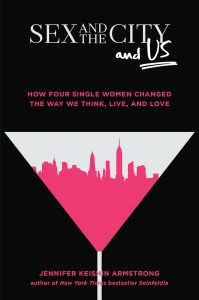 SEX AND THE CITY AND US
SEX AND THE CITY AND US
By Jennifer Keishin Armstrong
Fans of the series, look no further: You’ve found your beach book. It’s another thoughtful look at an iconic TV show from Armstrong (Seinfeldia), and this time it’s personal. Armstrong is so emotionally invested in Sex and the City that she comes clean in the introduction, telling readers about her own Carrie Bradshaw moments and career moves. Then she launches into a thorough and entertaining tale of how the hit show came into being—from Candace Bushnell’s original newspaper columns to the second, infamous feature film. Armstrong is an able guide, dishing gossip from the writers’ room and location shoots, where the four lead actors sang Broadway tunes during their 18-hour days. She ruminates about the show’s failings (mostly white, middle-class characters, and lumping bisexuality in with homosexuality) and on how it helped build the cable network HBO into a purveyor of respected TV. Armstrong loved the show as an imperfect feminist manifesto with the campy power to cheer up audiences.
—Joanne Latimer
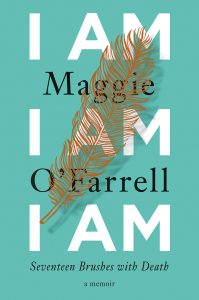 I AM, I AM, I AM
I AM, I AM, I AM
By Maggie O’Farrell
This account of the 16 times O’Farrell brushed up against death—and one truly terrifying moment when her young daughter did—is one of the finest memoirs of the decade. It is tautly and beautifully written, without a wasted word, and almost endlessly thought-provoking. The acclaimed Irish novelist, 45, describes hyper-aware, dangerous moments—a man holding a machete to her throat or a Caesarean gone so wrong that the attending doctors were leaving bloody footprints as they moved about her bed—and then weaves her present-day thoughts into her story, conveying immediacy and reflection at the same time. The membrane between life and death is thin, O’Farrell makes clear, yet it’s not the abrupt consciousness that oblivion is coming—if not now, some day—that matters, but what we make of that awareness, the story we tell ourselves.
—Brian Bethune
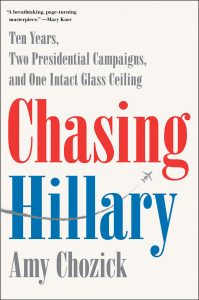 CHASING HILLARY
CHASING HILLARY
By Amy Chozick
Political journalists have been inserting themselves into the story since the heyday of Hunter S. Thompson, but Chozick may have reached a new level in this book. The New York Times journalist winds her own life into her intense coverage of Hillary Clinton’s presidential campaign, and intense it was. As far back as 2013, Chozick—who was 37 when the 2016 election was over—inquired into the possibility of freezing her eggs. She wanted a child-free front-row seat for the inevitable election of the FWP (first woman president, in journalese), and she wanted her byline on the front page the day after. There are juicy insider details, not just from the campaign but—angering her colleagues—from the Times’ office politics. Chozick describes diving into the media frenzy over Clinton’s emails despite private doubts about their relevance—because the email stories meant bylines. Few books are as eye-opening about the complicated relationship between journalists and politicians, even ones they admire.
—Brian Bethune
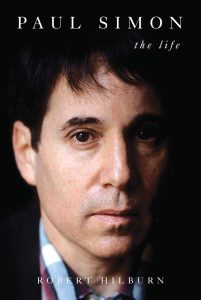 PAUL SIMON: THE LIFE
PAUL SIMON: THE LIFE
By Robert Hilburn
When Paul Simon started dating his third wife, Edie Brickell, she said to him, “I heard you weren’t so nice.” Hilburn doesn’t shy away from Simon’s more prickly tendencies and his more dramatic failures, but this thorough biography portrays an ambitious and ultra-serious songwriter whose drive and curiosity have been as important as his inherent talent. On the cusp of his retirement, the 76-year-old musical legend gave Hilburn more than 100 hours of interview time, as well as extensive access to his personal contacts, including ex-wives and lovers (among them the late Carrie Fisher). Notably absent: Art Garfunkel, although the singer scattered catty quotes about his partner in press clippings through the ages, and they are included here. Hilburn unveils some unexpected details—such as how Simon’s Amazonian adventures led him to overuse ayahuasca in the late ’90s—but also does his homework and avoids simply relying on Simon’s version of events. A previous biography, from 2010, was called Paul Simon: A Life; Hilburn’s is called Paul Simon: The Life. The subtle difference in the subtitle is significant.
—Michael Barclay
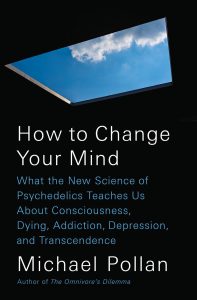 HOW TO CHANGE YOUR MIND
HOW TO CHANGE YOUR MIND
By Michael Pollan
After food classics The Omnivore’s Dilemma and In Defence of Food, Pollan shifts focus in a book subtitled What the New Science of Psychedelics Teaches Us About Consciousness, Dying, Addiction, Depression, and Transcendence. He takes a deep and rigorous dive into mind-altering drugs, surveying history and interesting contemporary research being done at Harvard University and elsewhere. Pollan hadn’t been living an adventurous life. “There’s quite enough to deal with up here on the surface,” he writes, illuminatingly, of his writer’s psyche. “All that stuff down there in the psychic basement has been stowed there for a reason.” But he found his discussions of psychedelics with academics and activists so fascinating that he took the plunge, sampling LSD, psilocybin and 5-MeO-DMT, otherwise known as toad. His experiences were a revelation, Pollan writes. “I don’t mean to suggest I have achieved this state of ego-transcending awareness, only tasted it,” he concludes in his epilogue. Even if you are unlikely to try psychedelics, Pollan’s words are, as ever, elegantly penned and thought-provoking.
—Alexander Bisley
FICTION

WARLIGHT
By Michael Ondaatje
In August 1945, two English parents tell their children they are going away for a year, leaving Nathaniel, 14, and his 16-year-old sister, Rachel, behind in London, under the care of a lodger the children call “the Moth.” With that, the father disappears from the story, while the mother haunts it. Nathaniel, like his mother a natural “secretive” (a descriptive noun in Warlight), recalls tiny details of his past and forgets the obvious (his lover’s name). Ondaatje subtly illuminates the forgotten periphery of conflict, how the Second World War and its aftermath were tailor-made for secretives, and the strange freedom war grants ordinary people—like a beekeeper whose hive-anaesthetizing skills served his country in war and his criminal career in peace. In a finely written novel that unfolds like an account of things foreordained—the sins of the mother visited upon the children—Ondaatje explores how our experiences, constantly reconfigured by our self-serving memories, shape us.
—Brian Bethune

FULL DISCLOSURE
By Beverley McLachlin
For page-turning legal thrillers, it’s hard to do better than this one, and not just because it’s by the ultimate insider: the recently retired chief justice of the Supreme Court of Canada. It features Jilly Truitt, a young Vancouver criminal defence lawyer with plenty of emotional baggage, who decides to represent a wealthy businessman accused of murdering his socialite, do-gooder wife. There is good reason, professional and personal, why this may not be a wise choice for Truitt in a milieu where the issues of murdered and missing Indigenous women and Robert Pickton’s infamous pig farm are more than passing references. But Truitt is as stubborn as she is smart, not to mention cynical enough to see the possible boost in reputation if she just manages to plant enough reasonable doubt in a single juror’s mind. And that’s before she comes to the conclusion her client is actually innocent.
—Brian Bethune
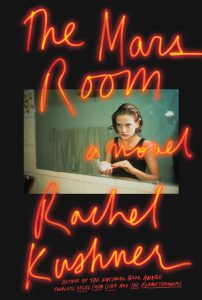 THE MARS ROOM
THE MARS ROOM
By Rachel Kushner
One of the most ambitious novelists of her generation, U.S. author Kushner fills her books to the brim with stories within stories, told by the characters the narrators meet or depict. In The Mars Room, tales about the world outside underline the oppression and claustrophobia in the California women’s prison where the protagonist, Romy Hall, is serving a life sentence in the 2000s, cut off from her young son. But they also make Kushner’s novel come alive with grim humour and unsentimental warmth. Kushner’s depth of research is obvious but never intrusive as she etches out, with irony-laden prose, the ways the profit motive steamrolls the rights to life, liberty and the pursuit of happiness for so many of the poor. If The Mars Room lacks the headlong zip of its predecessor, The Flamethrowers, it’s nonetheless engrossing—a vivid and multi-faceted portrait of people who are cursed by their class.
—Mike Doherty
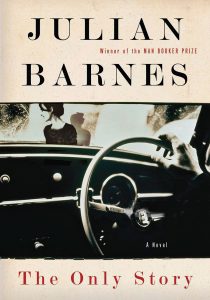 THE ONLY STORY
THE ONLY STORY
By Julian Barnes
Barnes’s 13th novel tells the story of a love affair in tripartite form: its euphoric beginning, muddy middle and messy aftermath. Our narrator, Paul, is 19 when he first meets 48-year-old Susan, a married mother of two girls his age, at a tennis club in their London suburb. Initially, the relationship is fuelled by rebellion—against stodgy 1950s institutions, against a “played-out generation,” and against Susan’s boorish, casually violent husband. The relationship fails, of course, but Barnes’s portrayal of its inexorable, slow-motion crash is riveting, heartbreaking and at times unapologetically existential. Musing retrospectively as a disillusioned older man, Paul returns to the question that opens the novel: “Would you rather love the more, and suffer the more; or love the less, and suffer the less?” The novel’s genius lies in its Schrödinger’s-cat approach: it drives a truck through romantic love’s ideal while unsentimentally affirming its power.
—Emily Donaldson
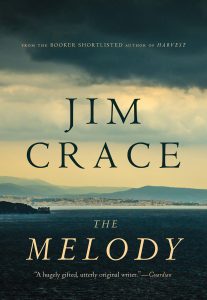 THE MELODY
THE MELODY
By Jim Crace
Alfred Busi, a 60ish widower, lives alone in the decrepit villa in which he was born. One night, he’s bitten by a barely seen creature he surprises while it’s feeding in his larder—a naked forest child, Busi believes, not feral but wild. Storylines abound against the elusive setting of English author Crace’s 12th novel—somewhere along the Mediterranean, sometime in the past century—including Busi’s willingness, like Prospero before him, to acknowledge a “thing of darkness” as his own. But Busi is as lonely in his sympathies as in his life. His fellow bourgeois simultaneously mock his wild child story and internalize it, fuel for their growing fear of the poor, of strangers, of nature itself: “cave-spiders, cavemen, the vulgar poor” are all the same to them. It’s impossible to miss the echoes, in this beguiling and ultimately haunting novel, of the contemporary West’s desire to wall off the world’s troubles, human and natural.
—Brian Bethune
 AN OCEAN OF MINUTES
AN OCEAN OF MINUTES
By Thea Lim
In 1981, one of the few escapes from a deadly flu pandemic is time travel. Polly, 23, signs on for a 12-year jump into the future (and 32 months of indentured servitude) in exchange for health care for her sick lover, Frank, 28. After mere minutes for her, Polly, still 23, and Frank, 40 but cured, will meet again. Except the company “reroutes” her, and Polly emerges in 1998, five years later than planned, into an ugly new world, with Frank nowhere to be found. This is an ambitious novel, encompassing a time-travel story, a dystopia and a critique of the ways the rich global North exploits the poor South—none of which is substantial enough to stand alone. But the love story—more precisely, Toronto-based Lim’s exquisite examination of the soul-saving illusions of love—that unspools as Polly searches for Frank is more than strong enough to carry this absorbing debut.
—Brian Bethune
 IMMIGRANT, MONTANA
IMMIGRANT, MONTANA
By Amitava Kumar
Fiction can be, as is said about history, one damn thing after another, but that approach rarely makes a novel as compulsively readable as Kumar’s. Immigrant is at once a tale of contemporary immigration and a sexual-awakening story. All the standard pointers to an autobiographical novel are present—when Kumar’s protagonist Kailash, looking for love as much as education, arrives in New York from India in 1990, the other grad students nickname him AK (after the Kalashnikov AK-47 rifle), Kumar’s own initials. But, clearly impatient with the idea of boundaries between fiction and memoir, the author also cites his own works, adds W.G. Sebald-like illustrations to illuminate his text and overtly melds shame-faced recollections with sanitized versions of how things should have gone down. The fusion doesn’t make for a tidy narrative, but the novel’s near-perfect capture of the messy truth about human memory infuses Immigrant with an eerie resonance.
—Brian Bethune
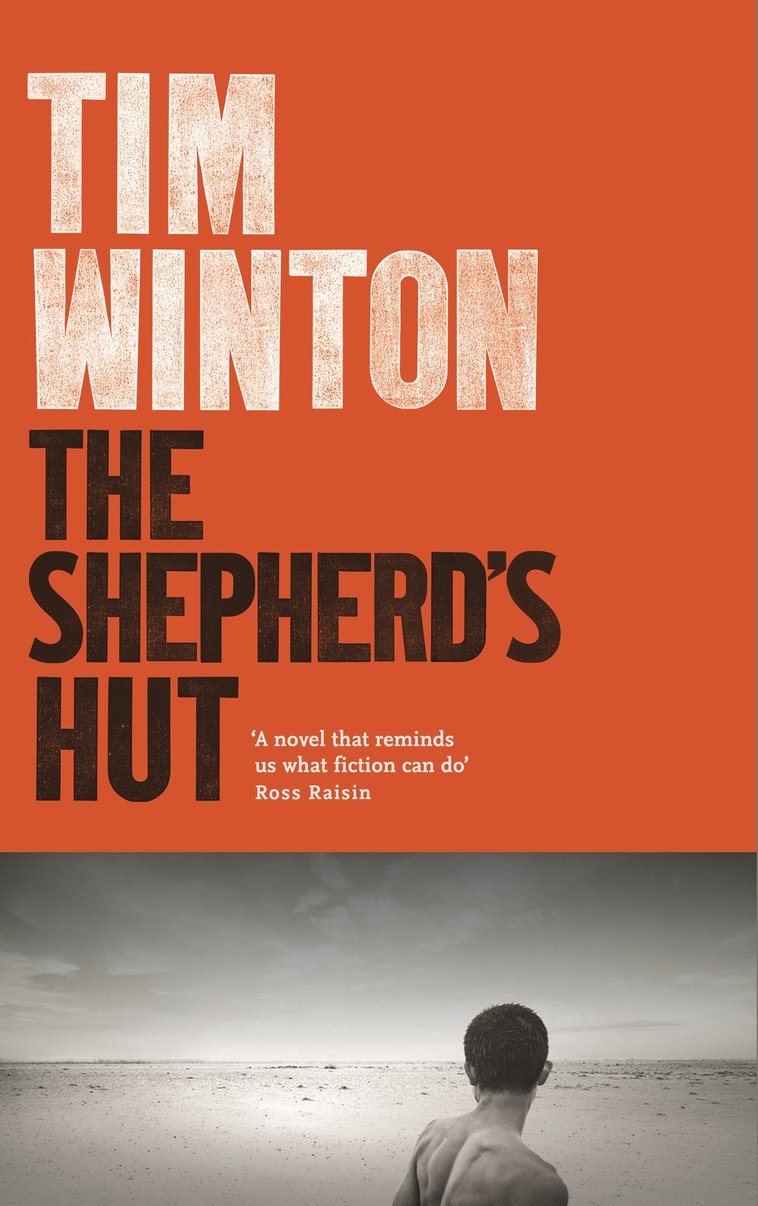 THE SHEPHERD’S HUT
THE SHEPHERD’S HUT
By Tim Winton
Twice shortlisted for the Booker Prize, for The Riders and Dirt Music, Winton is one of Australia’s finest novelists and short story writers. He has created numerous messed-up, working-class males with admirable texture and empathy, and The Shepherd’s Hut’s Jaxie Claxton—a violent teen on the lam after his father’s death—is one of them. The tenderness Jaxie’s girlfriend has shown him, artfully evoked by Winton, keeps him going. From the beginning, when Jaxie hits the road, driving “with a chop in one hand and the wheel in the other” and “laughing hard enough to choke,” Winton crafts arresting images. Jaxie is leaving behind the cruelty of his father, who’s described as “That bucket of dog sick . . . He wouldn’t give you the sweat off his balls.” Out among the remote salt lands, Jaxie meets another outcast, lapsed priest Fintan MacGillis. Their unlikely rapport, and their mutual search for a state closer to peace, is engaging. The Shepherd’s Hut succeeds with Winton’s distinctive vernacular and turn of phrase, and his everyday poetry.
—Alexander Bisley